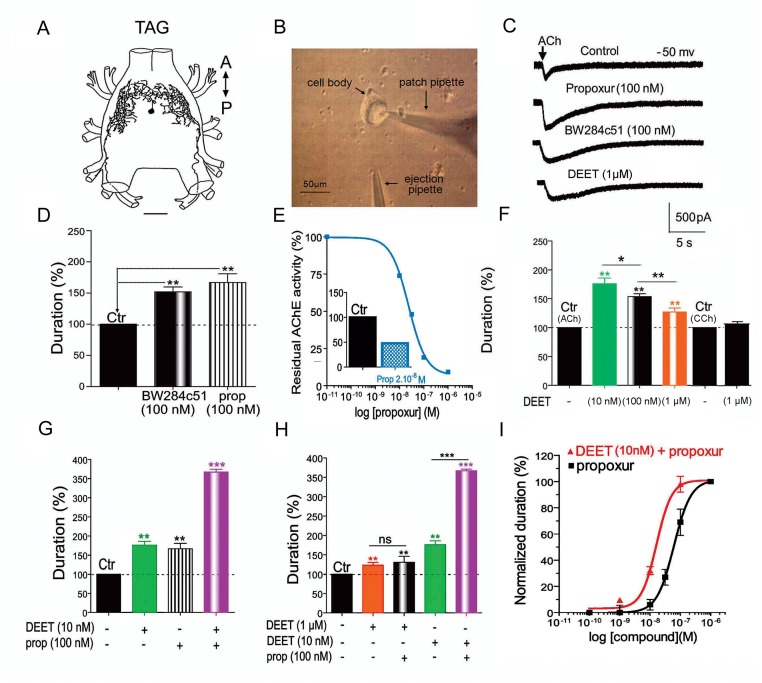Fig 1. DEET potentiates the carbamate-induced anticholinesterase effect in insect DUM neurons.
A) Dorsal view camera lucida drawing of typical DUM neuron morphology revealed by anterograde cobalt staining performed on a soma located along the midline of the cockroach terminal abdominal ganglion (TAG) of the nerve cord. A, anterior; P, posterior; scale bar 120μm. B) Light micrograph of the whole cell patch-clamp technique adapted on the isolated DUM neuron cell body obtained after enzymatic digestion and mechanical dissociation of the TAG. C) Anticholinesterase effects of the carbamate, propoxur, the anticholinesterase compound BW284c51 and the repellent DEET on the duration of the ACh-induced inward currents (measured at 50% of the maximum current amplitudes) obtained in whole-cell voltage-clamp at a steady-state holding potential of -50 mV. D) Comparative bar graph summarizing the anticholinesterase effect of the specific inhibitor BW284c51 (100nM) and the carbamate, propoxur (prop) (100nM) measured on the duration of the ACh-induced inward currents (measured at 50% of the maximum current amplitudes) obtained in whole-cell voltage-clamp at a steady-state holding potential of -50 mV. E) Concentration-dependent inhibition of the residual AChE activity determined spectrophotometrically induced by propoxur and expressed as percentage of initial activity (i. e., without propoxur). The curve represents the best fit to the data points according to the Hill equation yielding the corresponding IC50 (i.e., the concentration of propoxur that produces 50% inhibition of the AChE enzymatic activity) as illustrated in the comparative bar graph shown in inset. This indicates that isolated DUM neurons express functional AChE. F) Bar graph summarizing the unexpected concentration-dependent effect of DEET on the ACh-induced inward current duration. At low concentration (10nM), DEET produces a more important anticholinesterase effect than those observed with higher concentrations (i.e., 100nM and 1μM). By contrast, DEET (1μM) do not produce any effect on the carbachol(CCh)-induced current. G) Comparative bar graph illustrating the anticholinesterase effects of DEET (10nM) and propoxur (100nM) tested alone and in combination (DEET/propoxur). Pretreatment of DUM neuron with low concentration of DEET (10nM), for 15 minutes, strongly potentiates the propoxur-induced anticholinesterase effect. H) Comparative bar graph showing that synergistic effect between DEET and propoxur is only observed at low concentration of DEET (i. e., 10nM) and not with higher concentration (i. e., 1μM). I) Semi-logarithmic concentration-response curves for the anticholinesterase effect induced by propoxur applied alone and in the presence of 10nM DEET. The sigmoid curves represent the best fit to the mean data points according to the Hill equation yielding the corresponding IC50 of 2.10-8M and 6.10-8M estimated for DEET and propoxur applied in combination and for propoxur applied alone, respectively. Number of experiments varies from 10 to 16 cells. Data are means ± S.E.M. ** and ***, values significantly different, p < 0.01 and p<0.001, respectively; ns, not significant (p > 0.05).

